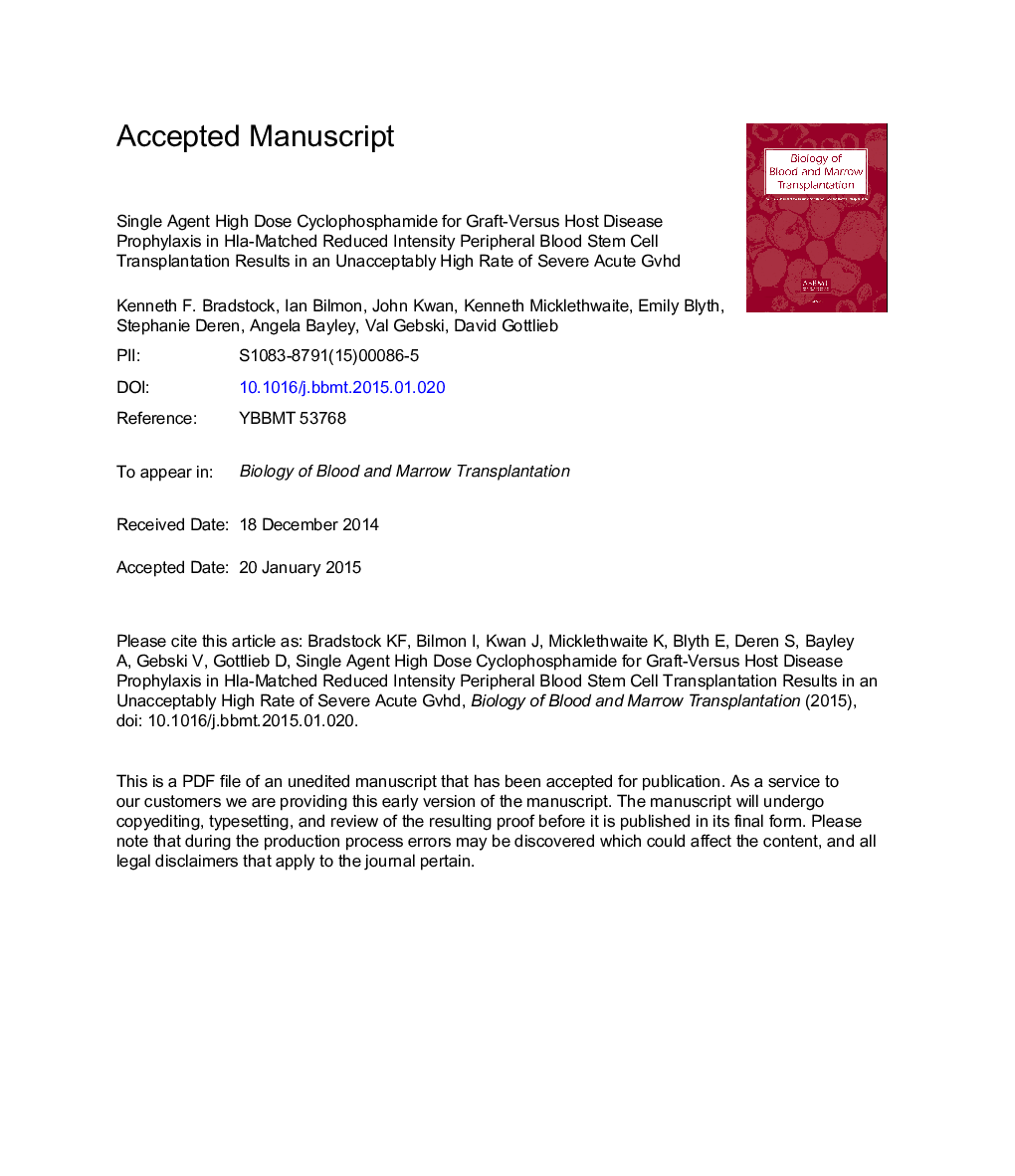| Article ID | Journal | Published Year | Pages | File Type |
|---|---|---|---|---|
| 8431556 | Biology of Blood and Marrow Transplantation | 2015 | 14 Pages |
Abstract
High-dose cyclophosphamide given early after allogeneic hemopoietic cell transplantation has been shown to be effective prophylaxis against graft-versus-host disease (GVHD) in the setting of HLA-matched myeloablative bone marrow grafts, allowing avoidance of long-term immunosuppression with calcineurin inhibitors in some patients. Whether this approach is feasible using granulocyte colony-stimulating factor (G-CSF)-mobilized peripheral blood stem cell grafts is unknown. We conducted an exploratory phase 2 trial of cyclophosphamide given at 50 mg/kg i.v. on days 3 and 4 after transplantation as sole GVHD prophylaxis in recipients of G-CSF-mobilized peripheral blood stem cell grafts from HLA-matched related or unrelated donors after reduced-intensity conditioning therapy with fludarabine, carmustine, and melphalan. Five patients, ages 52 to 67 years, with high-risk hematologic malignancies were enrolled. Four of the 5 developed severe acute GVHD of grades 3 to 4, requiring treatment with methylprednisolone and cyclosporine; 3 were steroid refractory and were given salvage therapy. One of these 4 patients died of hepatic GVHD, one died of sepsis, and 2 survived. We conclude that post-transplantation cyclophosphamide is inadequate as sole GVHD prophylaxis in the context of peripheral blood reduced-intensity conditioning transplantations from HLA-matched donors. This trial is registered at ACTRN12613001154796.
Keywords
Related Topics
Life Sciences
Biochemistry, Genetics and Molecular Biology
Cancer Research
Authors
Kenneth F. Bradstock, Ian Bilmon, John Kwan, Kenneth Micklethwaite, Emily Blyth, Stephanie Deren, Angela Bayley, Val Gebski, David Gottlieb,
